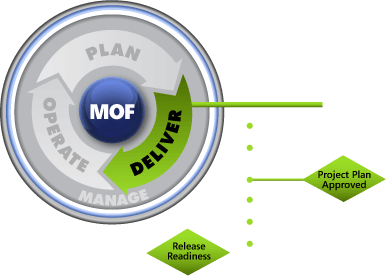Deployments & SharePoint



My SharePoint deployments, along with all my Office365 deployments are completed In line with Microsoft Operations Framework. Detailed below is an abridged version of my routine for the knowledge of key stakeholders. In short, my deployments have 5 stages, with an aim to to begin stage three (initial piloting) within the first 8-10 weeks. The time-frame each stage could vary dependent on scope, scale and availability of stakeholders. Because development and deployments usually come in cycles, phases three to five will perpetually repeat themselves.

Phase One – Pre-Deployment
- Industry?
- Practices?
- Number and how many types of users
- Scalability?
- External Users?
- Success criteria?
- Pilot criteria?
- User Planning (plan of rollout to external users)
- Management Style?
- Rights Management?
- Telemetry?
At this stage we try to establish some goals that you are trying to achieve in regards to file management, permissions and procedures. This involves gaining an understanding on current ways of working so we can throw around feasible ideas and possibilities. Once, at least, a basic understanding of direction is obtained we can proceed to Phase Two
Phase Two – Planning Stage
- Creating Site Collections/General Permissions
- Preparing Collaboration Site?
- Implementing possibilities
- Testing file management
- Demonstrating functionality to key stakeholders
- Pilot User Planning
During this stage SharePoint Sites (Site Collections if necessary) and Libraries will be set up. Notes taken from the previous stage will help towards forming a prototype. The Prototype will note be complete until piloting stages. This stage is used for development and input from key stakeholders; those who sign off on the project. Some functionality may be altered, added or lost until delivery stage.
Phase Three – Piloting Stage
- Agreement of functionality (key stakeholders)
- Initial piloting
- Training
- Feedback
- Outcomes
- Functionality alignment/refinement
- Creation of guideline documents
After a number of development, demonstrations and discussions with key stakeholders a more defined deployment should form. Basic functionality will be solidified .Enough to begin piloting to selected users for feedback. Pilot users are trained and introduced to the system. Any bugs or issues with this new way of working should reveal themselves as we define our deployment to the point of final release. Feedback from end users helps to re-align any functionality.
Phase Four – Migrate Stage
- Release Readiness?
- Extend Pilot?
- Migrate Files
- Final Pilot
- Agree to deploy
- Raising user Awareness
- Plan for transition
Necessary files are migrated for a final piloting round. More pilot users can be added at this stage dependant on scale. Agreement to go live to all users is sought as we build final documentation and procedural guidelines for new ways of working. All users are trained. Checks on if achievement of success criteria. Ready to go live.
Phase Five – Deployment Stage
Deployment to all users. Operational health is monitored along with policy control. Final signoff from key stakeholders after success criteria are met. Explore possibilities towards future functionality.
The cycle continues….
As mentioned initially, once phase 5 has been reached and sign-off by key stakeholders has been achieved, we go back to Phase 2 in a perpetual cycle of maintenance and improvement. The feedback and knowledge gained from going live is invaluable. After the first cycle, in most instances, it is best to re-implement necessary changes and improvements quickly.
Thank You For Reading



